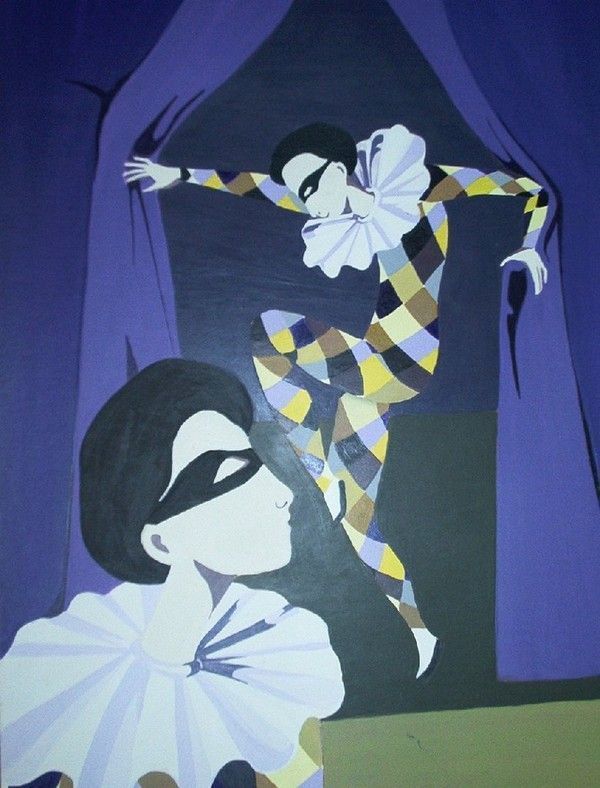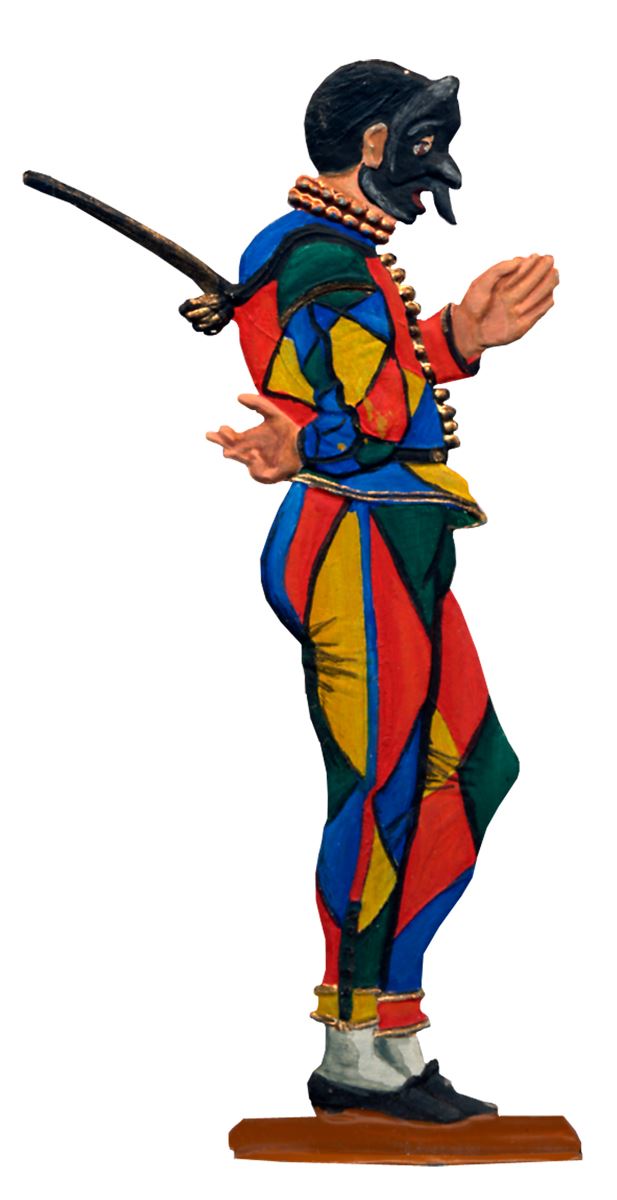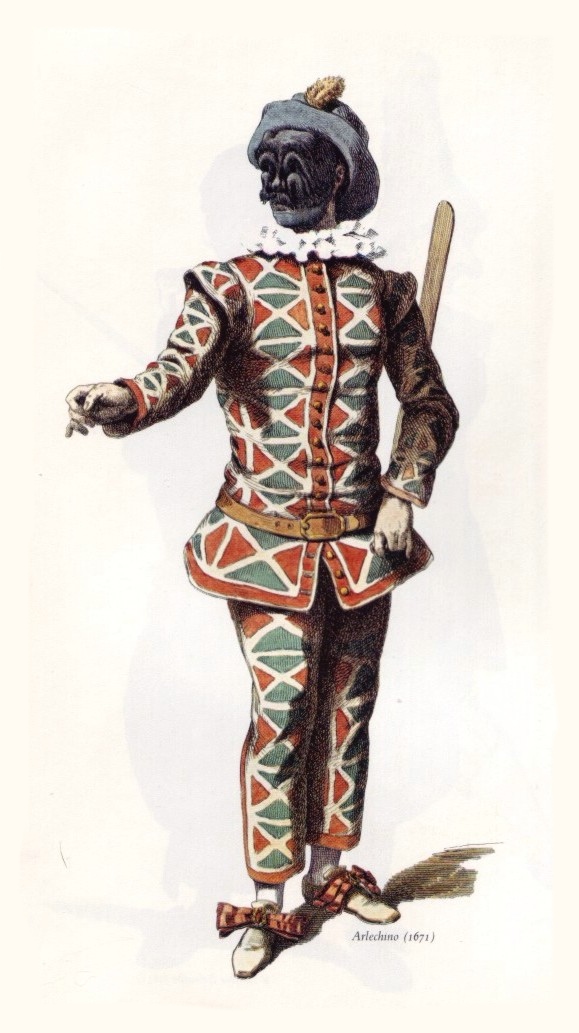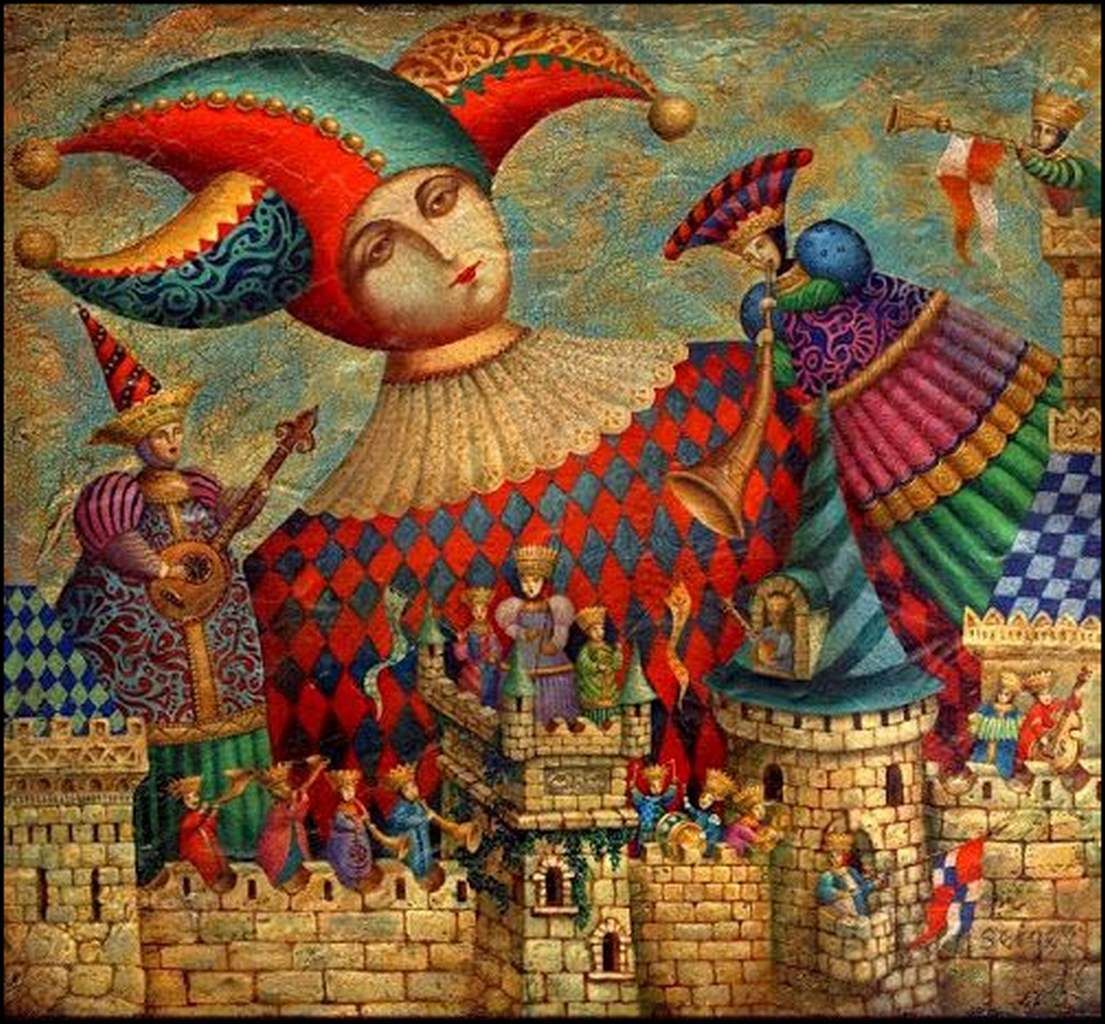
commedia dell'arte par les grands peintres Arlequin et Colombine Sofia Chiostri (18981945
Lynne Lawner's Harlequin on the Moon, recently published by Harry N. Abrams, traces the history of commedia dell'arte from its beginnings as popular entertainment in Renaissance Italy through many transformations to its rediscovery in the experimental theater of today.. In her lively slide-lecture, author and art historian Lynne Lawner maps out all of these aspects, unearthing rare texts.

FileMarks, J.L. theatrical portrait Mr Ellar as Harlequin Google Art Project.jpg
xiv, 242 pages 29 cm. Access-restricted-item true Addeddate 2020-03-03 14:02:16 Boxid IA1779710 Camera

Berliner Zinnfiguren Commedia dell'Arte Arlequin I purchase online
February 26—May 30, 2011Gallery 246. Harlequin is one of the most recognizable and enduring figures of the Commedia dell'Arte, an improvised form of theater performed by masked actors that originated in the mid-16th century in northern Italy but soon spread to the streets and courts of Europe. Commedia dell'Arte troupes were especially.

ARLEQUIN COMMEDIA DELL'ARTE Centerblog
The commedia dell'arte was an improvised drama performed by masked players. How did the actors react to these demands and limitations? What force kept this form of theatre alive for more than two centuries and made Harlequin such a potent image?

Commedia dell'Arte Arlequin I
Harlequin ( / ˈhɑːrləkwɪn /; Italian: Arlecchino [arlekˈkiːno]; Lombard: Arlechin, Bergamasque pronunciation [arleˈki]) is the best-known of the comic servant characters ( Zanni) from the Italian commedia dell'arte, associated with the city of Bergamo. The role is traditionally believed to have been introduced by the Italian actor.

Commedia dell’arte Essay Heilbrunn Timeline of Art History The Metropolitan Museum of Art
Oil on canvas; 20 x 30 in. (50.8 x 76.2 cm). The Metropolitan Museum of Art, New York, Amelia B. Lazarus Fund, 1922 (22.220) Emancipated from slavery, this man dressed as Harlequin is preparing to participate in a Fourth of July ceremony, respecting a tradition that for so many years did not respect him. Assisted by his family, he adds strips.

The Masks of the Commedia dell’Arte Commedia dell’arte, Stock character, Mask
A commedia dell'arte street play during the Carnival of Venice Commedia dell'arte Troupe on a Wagon in a Town Square by Jan Miel (1640). Commedia dell'arte (/ k ɒ ˈ m eɪ d i ə d ɛ l ˈ ɑːr t eɪ, k ə-,-ˈ m ɛ d i ə,-ˈ ɑːr t iː /; Italian: [komˈmɛːdja delˈlarte]; lit. 'comedy of the profession') was an early form of professional theatre, originating from Italian theatre, that.

Harlequin Clownopedia FANDOM powered by Wikia
Columbine, stock theatrical character that originated about 1530 in Italian commedia dell'arte as a saucy and adroit servant girl; her Italian name means "Little Dove." Her costume included a cap and apron but seldom a commedia mask, and she usually spoke in the Tuscan dialect.In French theatre the character became a lady's maid and intrigant and assumed a variety of roles opposite.

Arlequim, Colombina e Pierrot Иллюстрации, Цирковое искусство, Картины
The commedia dell'arte began in Italy as irreverent, improvised street theatre and is best known for its exuberant characters--Harlequin, Pantalone, Pulcinella, Scaramouche, and Colombine, among others.

commedia dell'arte par les grands peintres arlequin Balades comtoises
Commedia dell'arte is a theatrical form characterized by improvised dialogue and a cast of colorful stock characters that emerged in northern Italy in the fifteenth century and rapidly gained popularity throughout Europe. The earliest known company formed in Padua in 1545, and by the turn of the seventeenth century troupes such as the Gelosi.

commedia dell'arte par les grands peintres Yesipov Andrey Mihajlovich Pierrot et Arlequin
The most famous Zanni characters include: Arlecchino (Harlequin): Known for his diamond-patterned costume, he is mischievous, agile, and in love with Colombina. Brighella: A cunning and sly character who often serves as a henchman to other characters. Scapino: A quick-witted and cunning servant who is always looking for a way to make a quick buck.

Arlecchino Stock Character, Character Design, Pierrot Clown, Carnival Masks,
The commedia dell'arte was a form of masked street theatre popular in Italy in the 16th and 17th centuries. It was a form of colourful, improvisational theatre that featured a set of stock characters, each with distinct traits and costumes, that engage in humorous and farcical scenarios. One of the stock characters, Harlequin, or in Italian.

La commedia dell\'arte
commedia dell'arte, (Italian: "comedy of the profession") Italian theatrical form that flourished throughout Europe from the 16th through the 18th century. Outside Italy, the form had its greatest success in France, where it became the Comédie-Italienne.In England, elements from it were naturalized in the harlequinade in pantomime and in the Punch-and-Judy show, a puppet play involving.

Masques Commedia Dell'Arte Arlequin Classique Atelier Pirate
Commedia dell'arte, also known as "Italian comedy," was a humorous theatrical presentation performed by professional actors who traveled in troupes throughout Italy in the 16th century. Performances took place on temporary stages, mostly on city streets, but occasionally even in court venues. The better troupes — notably Gelosi, Confidenti.

62 best images about 'Servant' Commedia dell'Arte on Pinterest Teatro, Leather mask and Italian
Product filter button Description Contents Resources Courses About the Authors The commedia dell'arte was an improvised drama performed by masked players.

commedia dell'arte par les grands peintres Victoria Francisco Arlequine Balades comtoises
Harlequin, one of the principal stock characters of the Italian commedia dell'arte; often a facile and witty gentleman's valet and a capricious swain of the serving maid.. In the early years of the commedia (mid-16th century), the Harlequin was a zanni (a wily and covetous comic servant), and he was cowardly, superstitious, and plagued by a continual lack of money and food.